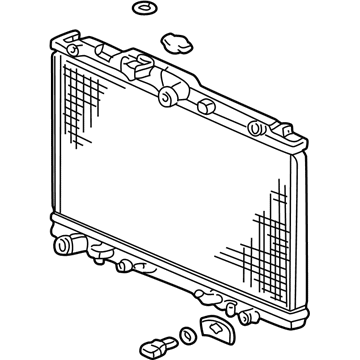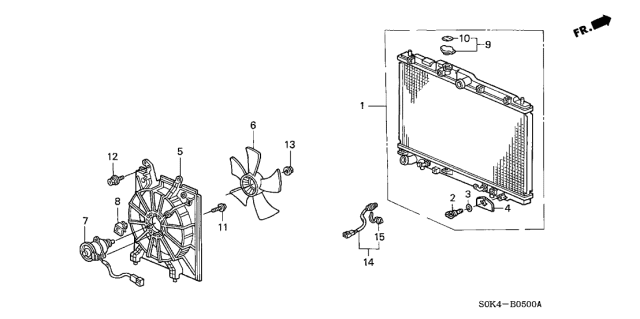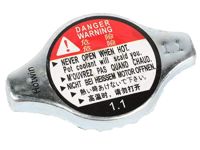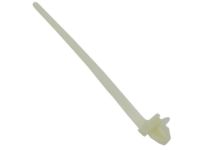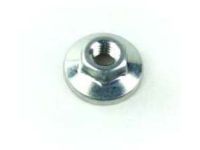For diagnosing cooling system issues, when engine overheating occurs and the cooling fan is inactive, test the fan motor by disconnecting its electrical connector and connecting it directly to the battery and ground using jumper wires. If the fan doesn't work, replace the motor. In models with two fans, test the air conditioning condenser fan motor (passenger side) if the radiator fan motor (driver side) is functional. Avoid applying battery power to the harness side of the connector. If the radiator fan motor is operational but fails to engage during engine overheating, consider faulty fan relay(s). Locate the fan relays in the engine compartment fuse/relay box, including the additional small relay box for 2007 and later models. Test the relay(s), and if they're functional, proceed to test the radiator fan switches, or ECT sensors in newer models, responsible for fan operation based on temperature. These switches can be tested with an ohmmeter to identify continuity at specific temperatures. If the relays and fan switch are functional, inspect wiring and connections to the fan motors, seeking professional repair if necessary. For replacement, disconnect the battery, raise and secure the vehicle, remove the lower splash shield, and drain the cooling system if needed. Continue by removing the radiator cover, coolant reservoir, and upper radiator hose. For radiator removal, disconnect the negative battery cable, secure the vehicle, remove the front engine splash shield, and drain the cooling system. Remove the radiator cover and cooling fans, then disconnect hoses and electrical connectors from the radiator. Carefully lift out the radiator, inspect it, clean any debris, and check rubber cushions for damage. Reinstallation involves guiding the radiator into the mounts, tightening bracket bolts, filling the cooling system, reconnecting the battery, checking for leaks, and ensuring proper fluid levels.
Posted by AcuraPartsWarehouse Specialist 




